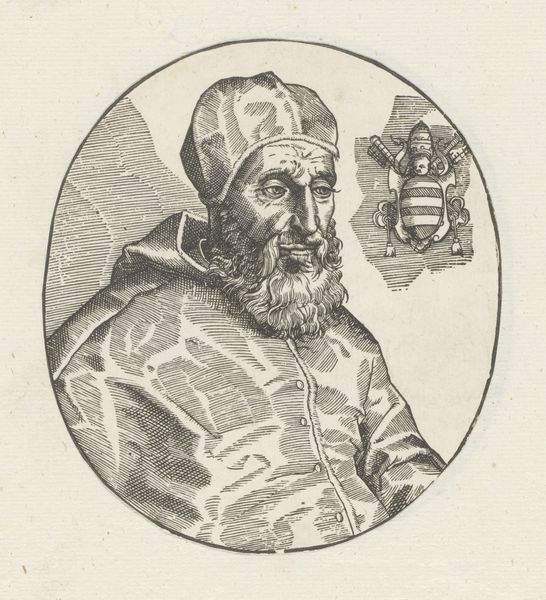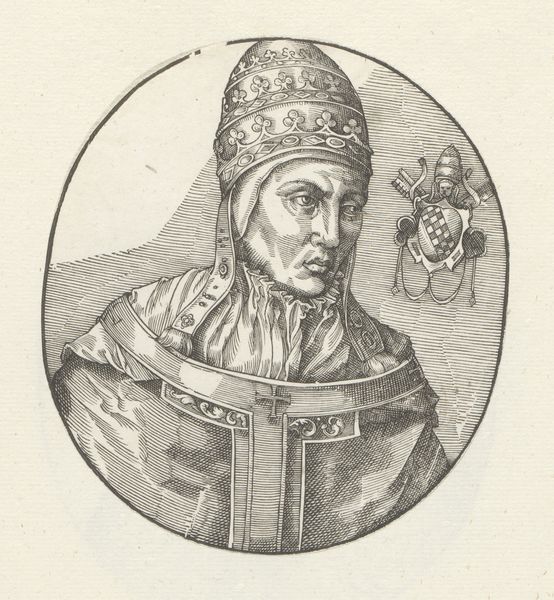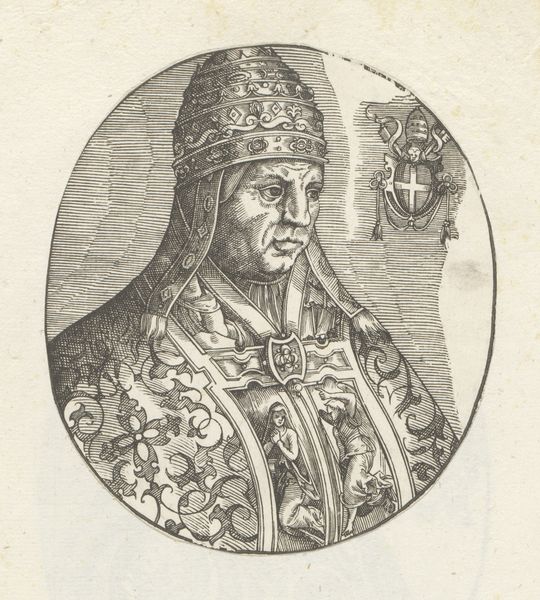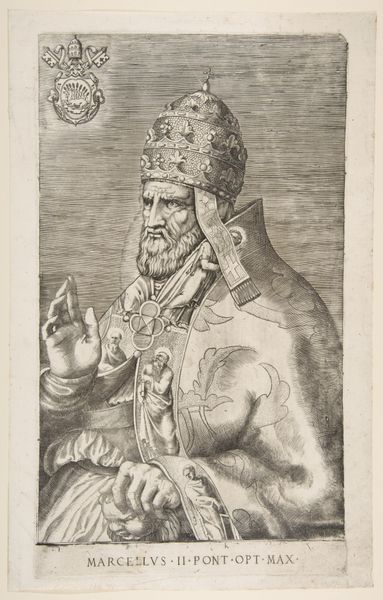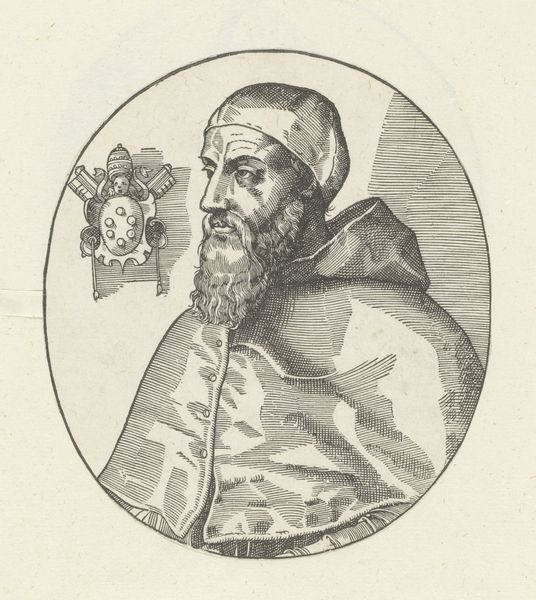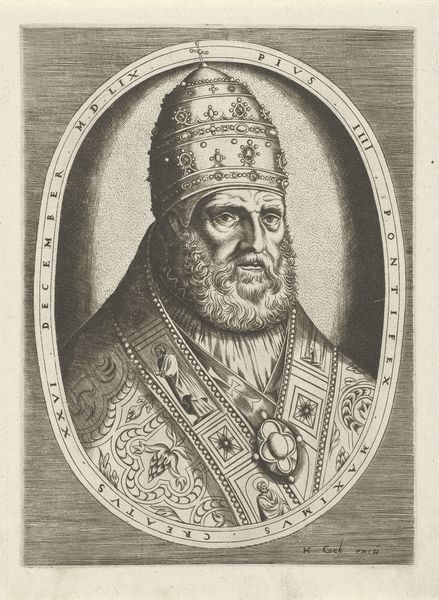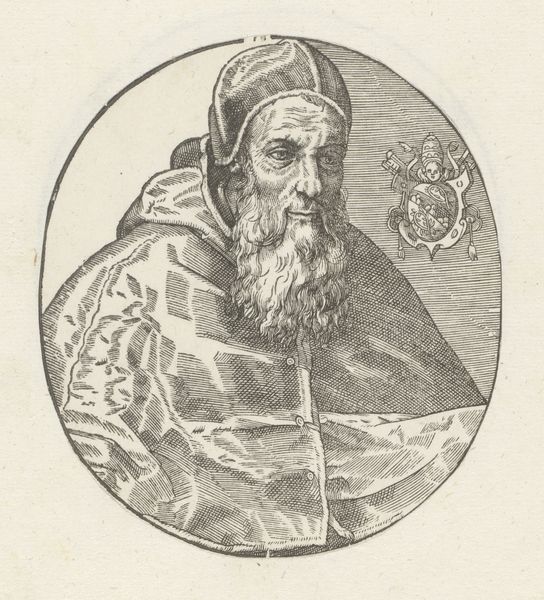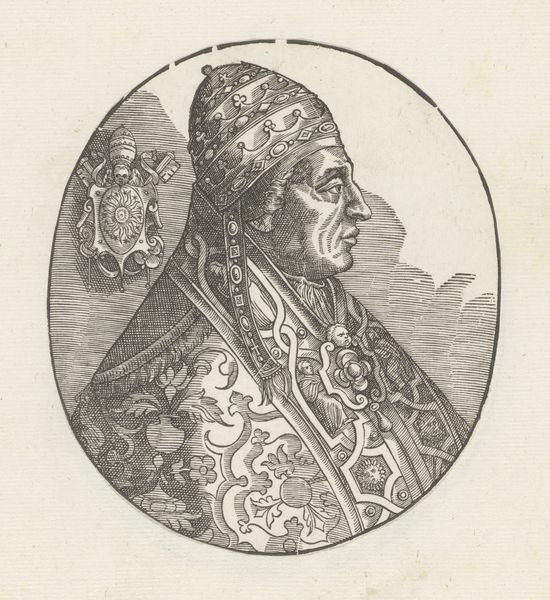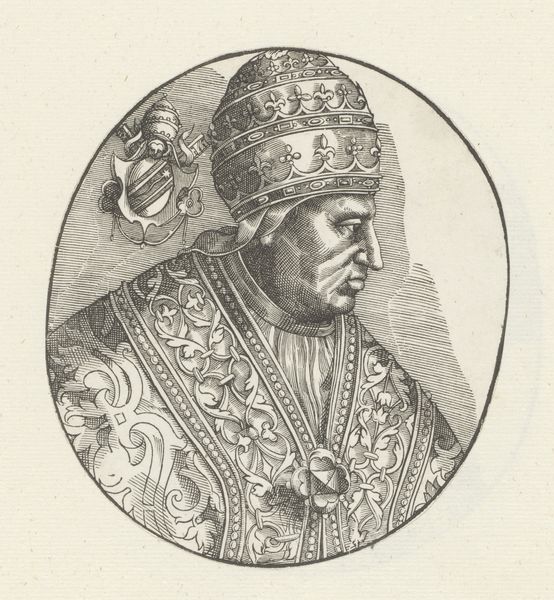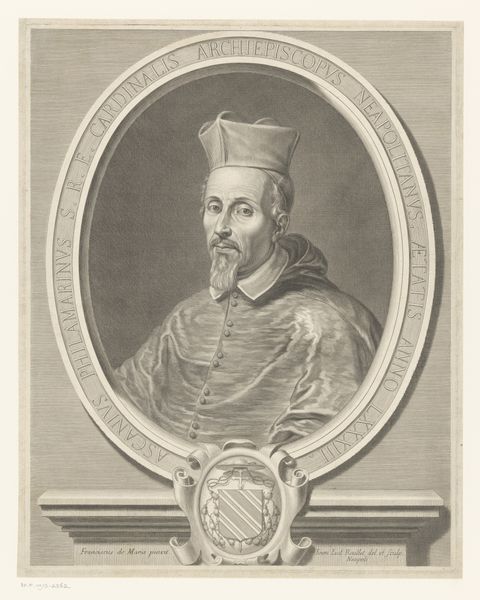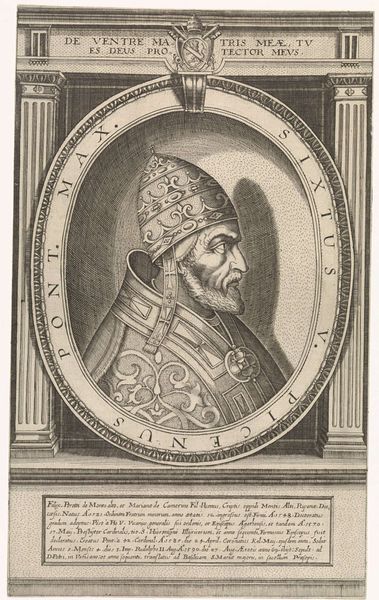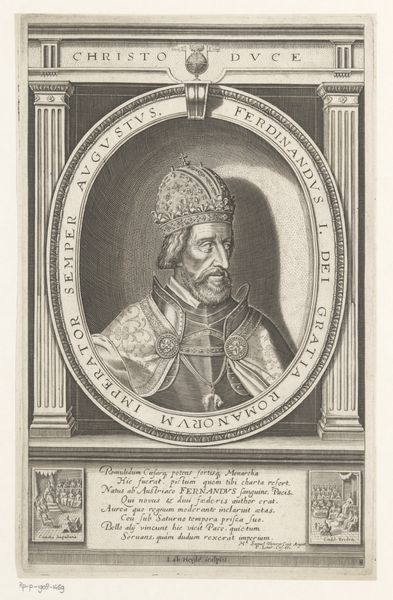
#
quirky sketch
#
shading to add clarity
#
pen sketch
#
pencil sketch
#
old engraving style
#
personal sketchbook
#
sketchwork
#
pen-ink sketch
#
limited contrast and shading
#
sketchbook drawing
Dimensions: height 128 mm, width 113 mm
Copyright: Rijks Museum: Open Domain
Curator: Take a look at this portrait of Pope Gregory XIII, likely created between 1549 and 1573 by an anonymous artist. It's rendered in what appears to be ink, giving it a somewhat immediate, sketch-like quality. Editor: My initial reaction is that the subject is really dominating within the circular border. He certainly wants you to know he is in charge. There's not much empty space and a lot of heavy costuming, so it conveys an undeniable air of authority. Curator: Absolutely. These portraits played a key role in solidifying the image and authority of the papacy. The high level of detail, despite it being a sketch, reinforces his status, echoing similar visual strategies from the time. Notice how much effort is dedicated to illustrating his Papal regalia? Editor: Precisely. It is all very meticulously rendered. Consider, also, the cultural climate of that period, still entrenched in religious doctrine and deeply hierarchical social structures. Art was, and continues to be, a tool to cement power, both secular and spiritual. The Pope’s gaze seems both stern and distant – inaccessible. Curator: One can interpret his aloofness as intentional; It's worth considering how the papacy positioned itself as both worldly and separate from the everyday existence of its followers. The gaze holds the viewer, reinforcing their subjugated position. Also, I find this type of portrait, mass produced with relatively basic materials, to be democratizing in its accessibility to the common person. Editor: Democratizing is a generous interpretation. Think about it this way, these images also circulated during intense religious conflict, often fueling sectarian divisions. By controlling the image of the Pope, and ensuring it's spread widely, it becomes propaganda aimed to convert and oppress. Curator: You raise a valid point, there is often a more sinister element at play. Nevertheless, what is fascinating is the portrait's endurance; centuries later, we're still analyzing it, wrestling with these complicated interpretations. Editor: Exactly. It's a reminder that art, even in what appears to be a straightforward portrait, speaks volumes about the power dynamics and complex social realities of its time, influencing perception across the ages.
Comments
No comments
Be the first to comment and join the conversation on the ultimate creative platform.
